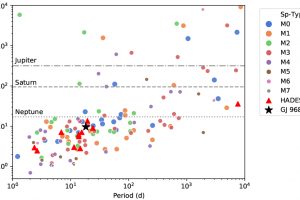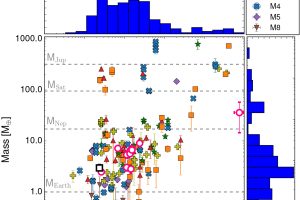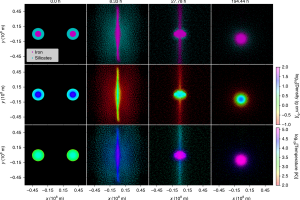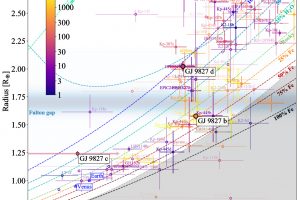A super-Earth for the star GJ 9689. The study: “HADES RV programme with HARPS-N at TNG. XIV. A candidate super-Earth orbiting the M-dwarf GJ 9689 with a period close to half the stellar rotation period” of J. Maldonado (INAF-OAPA) recently appeared on A&A

M stars are the most common stars in the Universe. They have a mass ranging between 0.6 and 0.08 Solar masses in the main sequence, and an effective temperature ranging between 3900 K and 2400 K. In these stars, the signals due to the presence of planets, such as radial velocity (periodic oscillations of the star from its rest position
» Read more




